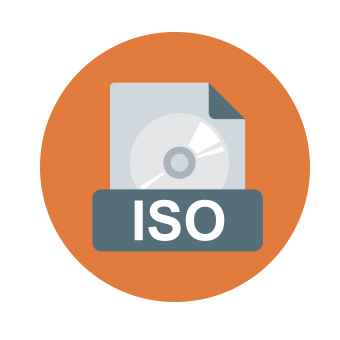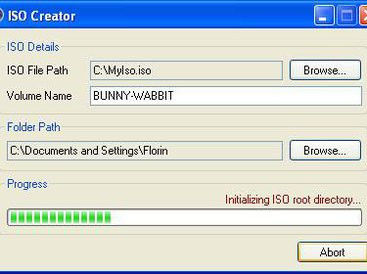Understanding the cost of implementing ISO standards through a tool like ISO Creator is essential for businesses seeking compliance. ISO Creator is designed to simplify the process of obtaining certification by offering a suite of tools, services, and software solutions that streamline documentation, quality management, audit preparation, and more. However, the cost of using ISO Creator can vary significantly based on multiple factors, including the size and scope of the business, the specific ISO standard being pursued, and the level of support required. Establishing clarity around these costs can help businesses plan their budgets effectively, optimize resource allocation, and maximize the return on investment.
For companies, ISO certification is not just a badge of honor; it signifies adherence to global standards, enhances credibility, and often opens new market opportunities. This is why it’s crucial to understand all aspects of ISO Creator’s pricing structure. Such an understanding allows organizations to make informed decisions when choosing services or packages that best suit their needs. Whether a business is a startup aiming for ISO 9001 for quality management or a larger entity targeting ISO 27001 for information security, the cost considerations will differ. By exploring the various pricing models and determining which services align with their compliance objectives, businesses can avoid unnecessary expenses and ensure they only pay for what adds value to their certification journey.
Factors Influencing ISO Creator’s Pricing
ISO Creator’s pricing is not a one-size-fits-all model. The total cost is influenced by numerous variables that directly impact how much a business will invest in its ISO certification. One of the primary factors is the type of ISO standard a company is looking to implement. For example, the implementation of ISO 9001, which focuses on quality management systems, might involve a different set of requirements, documentation templates, and compliance tracking tools compared to ISO 27001, which is centered around information security management. These differences necessitate varying levels of support and customization, which in turn affect the overall cost.
Another significant pricing determinant is the scope of implementation. This includes the size of the organization, the number of employees, and the geographical spread of business locations. For a small company operating out of a single office, the implementation process will be relatively straightforward, requiring fewer resources and less time. However, for a multinational corporation with offices across several regions, the complexity increases. Multiple locations often mean different management processes, diverse regulatory environments, and varying levels of compliance needs, which lead to increased costs for comprehensive software solutions, training sessions, and ongoing support.
Additionally, the service options selected by the company play a pivotal role in determining the price. Some businesses may only require basic compliance tracking software, while others may opt for extensive consulting services to guide them through each step of the certification process. ISO Creator offers various service levels, from minimal software subscriptions to full-scale consulting and documentation development services, each with its own pricing structure. The more extensive and hands-on the service, the higher the cost. Customization is another critical element, as businesses often need documentation and processes tailored to their specific industry requirements. Tailored services demand more attention and resources, thus influencing the overall cost.
Breakdown of ISO Creator Costs
A thorough breakdown of ISO Creator’s costs provides transparency and helps businesses evaluate what each component entails. The software subscription costs form the foundation of the pricing structure. ISO Creator typically offers various subscription models that cater to different organizational needs. These models can include basic, professional, and enterprise plans, each with escalating feature sets. The basic plan might offer essential document management and compliance tracking, while the professional and enterprise plans could include advanced features like risk management, automated audit preparation, and integration with other business management systems.
The subscription cost will vary depending on the number of users, the size of the organization, and the specific features required. A small business might choose the basic plan, which is more affordable, while a larger corporation with complex needs might opt for the enterprise plan. For organizations that want maximum functionality and customization, the costs can rise significantly. However, these higher-tier plans also provide greater value in terms of capabilities, allowing businesses to streamline processes and achieve compliance more efficiently.
Consulting and implementation costs are another major aspect of ISO Creator’s pricing. These costs come into play when a company requires expert guidance to implement ISO standards from scratch. Consulting services typically include initial assessments, gap analyses, compliance roadmaps, and hands-on support throughout the implementation process. Depending on the industry, the nature of the business, and the specific ISO standard being pursued, consulting costs can range from a few thousand dollars to tens of thousands. Implementation services can be billed hourly or on a project basis, with prices fluctuating based on the complexity and duration of the project.
Training and educational resources are also part of the ISO Creator cost structure. Training programs may include workshops, webinars, and on-site sessions aimed at educating employees and management teams on ISO requirements and best practices. These training sessions help build internal capacity and ensure that everyone in the organization understands their role in achieving and maintaining ISO compliance. Training costs can vary based on the mode of delivery (online vs. in-person), the number of participants, and the depth of the material covered.
Certification audit costs are another consideration. While ISO Creator itself may not conduct the official certification audits, it can help prepare organizations for these audits. The certification process involves an external body verifying that the organization’s management systems comply with the specified ISO standard. The cost of these audits depends on the certifying body, the number of audit days required, and the complexity of the organization’s management system. Some companies may choose to bundle pre-audit services with ISO Creator’s packages, which can lead to higher upfront costs but ensure smoother certification outcomes.
Additional Costs to Consider
In addition to the core service costs, businesses should be aware of potential additional costs. Customization and integration fees arise when a company needs to adapt ISO Creator’s offerings to suit its unique management systems or operational workflows. For instance, integrating ISO Creator with existing enterprise resource planning (ERP) systems or quality management software might require technical adjustments and configuration, which can add to the overall expense.
Ongoing maintenance and support are other factors that impact long-term costs. ISO standards require regular updates and re-certification to remain compliant. This means that companies need to continuously monitor their processes, make necessary adjustments, and stay updated on any changes in the standards. ISO Creator may offer ongoing support and maintenance packages that provide these services, ensuring that the organization remains compliant year after year. Such packages are often billed annually and can include software updates, compliance checks, and remote support.
Pricing Examples or Case Studies
To provide a clearer picture of the costs involved, real-world pricing examples or case studies can be beneficial. For instance, a small manufacturing company aiming for ISO 9001 certification might only require a basic software package and some initial consulting support. The cost for this might be a few thousand dollars spread over several months. In contrast, a large financial institution looking to implement ISO 27001 for information security management across multiple global offices could incur costs in the range of tens of thousands of dollars due to the extensive documentation requirements, consulting needs, and complexity of the audit process.
Case studies can highlight specific scenarios where companies with varying sizes, industries, and compliance needs have successfully used ISO Creator. These examples can include details on the services chosen, the implementation timeline, and the final cost, providing prospective users with a concrete understanding of what to expect. Such case studies can also illustrate how businesses can optimize their spending by selecting appropriate service levels and leveraging ISO Creator’s features to streamline compliance efforts.
Tips for Reducing Costs
While ISO certification can be a significant investment, there are strategies that businesses can employ to reduce costs. One approach is to focus on remote consultations and training sessions, which are typically more affordable than on-site services. By opting for virtual meetings, companies can save on travel and accommodation expenses for consultants and trainers. Group training sessions are another cost-saving strategy, as they allow multiple employees to receive education at the same time, reducing the per-person cost.
Selecting the right service tier is crucial for cost optimization. Businesses should assess their internal capabilities and only opt for higher-tier plans if they truly need the additional features and support. For smaller companies or those with less complex compliance needs, a basic or professional plan might suffice, while larger enterprises can consider the enterprise tier if it provides significant value in terms of compliance management.
Maximizing the return on investment involves focusing on the most critical areas for certification. Instead of trying to implement the entire standard at once, businesses can prioritize the most important processes and gradually expand their compliance efforts. This phased approach can help manage costs and reduce the financial burden associated with large-scale implementations.
Conclusion
Understanding the costs associated with ISO Creator requires a comprehensive view of various factors such as the type of ISO standard, the scope of implementation, service options, and additional expenses like training and customization. Businesses should conduct a thorough cost-benefit analysis to determine which services and pricing tiers align with their compliance objectives and financial constraints. By choosing the right combination of services and making informed decisions, organizations can achieve ISO certification efficiently while optimizing their budget.

